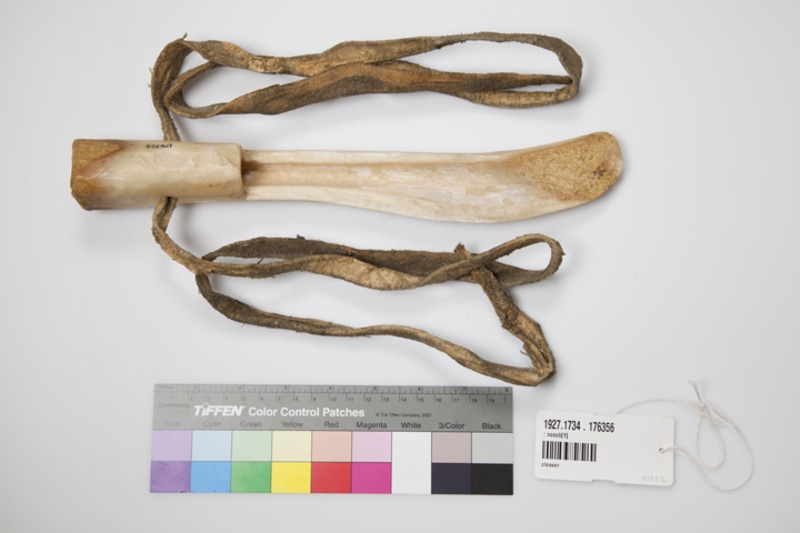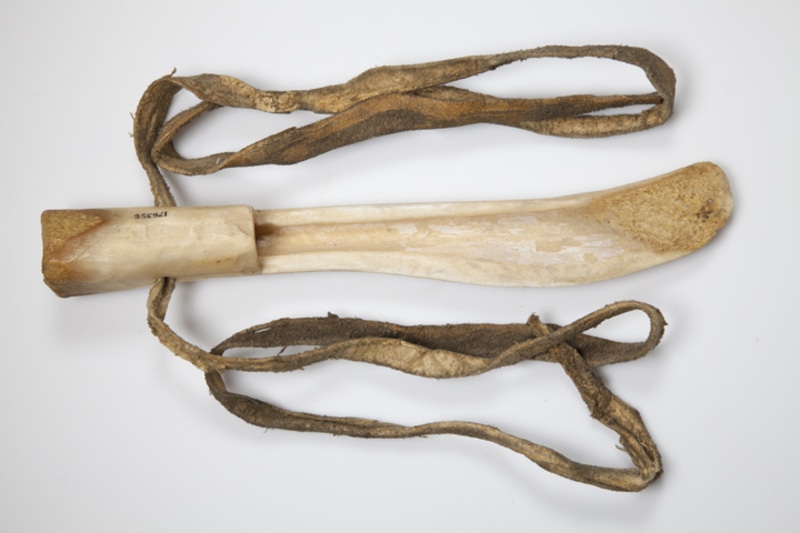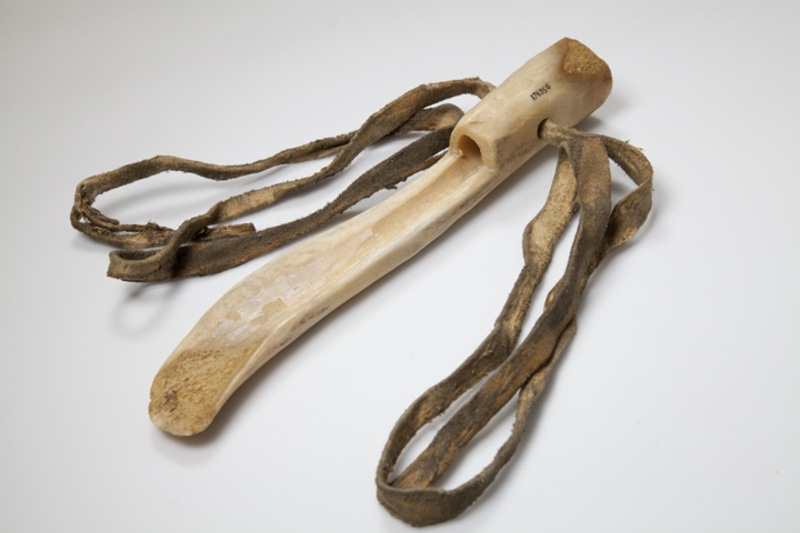cleaver Item Number: 1927.1734 . 176356 from the The Field Museum




Citations From Vanstone (1982) Article
« A large knife or cleaver is made from the leg bone of a moose. The bone is split in half at the distal end and has a beveled edge. Attached to this specimen is a shoulder strap of moose hide which is inserted through a hole approximately 5 cm from the proximal end (fig. 5a). According to Speck's notes, this knife was made to demonstrate what is done in the bush when metal knives are lost or no metal is available. »
Vanstone, James W. "The Speck Collection of Montagnais Material Culture from the Lower St. Lawrence Drainage, Quebec." Fieldiana. Anthropology. New Series, No. 5 (October 29, 1982), Vanstone p.8, fig 5a (p.33).
Translation Of Citations From Vanstone (1982) Article
« Un large couteau ou couperet est fait à partir d’un os de la patte d’un orignal. L’os est séparé en deux à l’extrémité distale et a un bord biseauté. Y est attachée une bandoulière faite de peau d’orignal passée à travers un trou situé à environ 5 cm de l’extrémité proximale (fig. 5a). Selon les notes de Speck, ce couteau a été fabriqué pour présenter ce qui est fait en forêt quand les couteaux en métal sont perdus ou qu’aucun métal n’est disponible. »
Vanstone, James W. "The Speck Collection of Montagnais Material Culture from the Lower St. Lawrence Drainage, Quebec." Fieldiana. Anthropology. New Series, No. 5 (October 29, 1982), Vanstone p.8, fig 5a (p.33).
Item History
- Made in Pekuakami, Lac Saint-Jean, Lake St. John, Labrador, Canada
What
- Name
- cleaver
- Identification Number
- 1927.1734 . 176356
- Type of Item
- cleaver
- Material
- “bone; leather shoulder strap” ?
Who
- Culture
- Ilnu, Montagnais and Innu
Where
- Holding Institution
- The Field Museum
- Made in
- Pekuakami, Lac Saint-Jean, Lake St. John, Labrador, Canada
Other
- Ethnic Group
- Montagnais
- Nom De L'objet
- Couperet
- Matériaux
- os; bretelle en cuir
- Collection
- Lake St. John Objects
- Provenience
- North America, Canada, Quebec, Labrador, Lake St. John